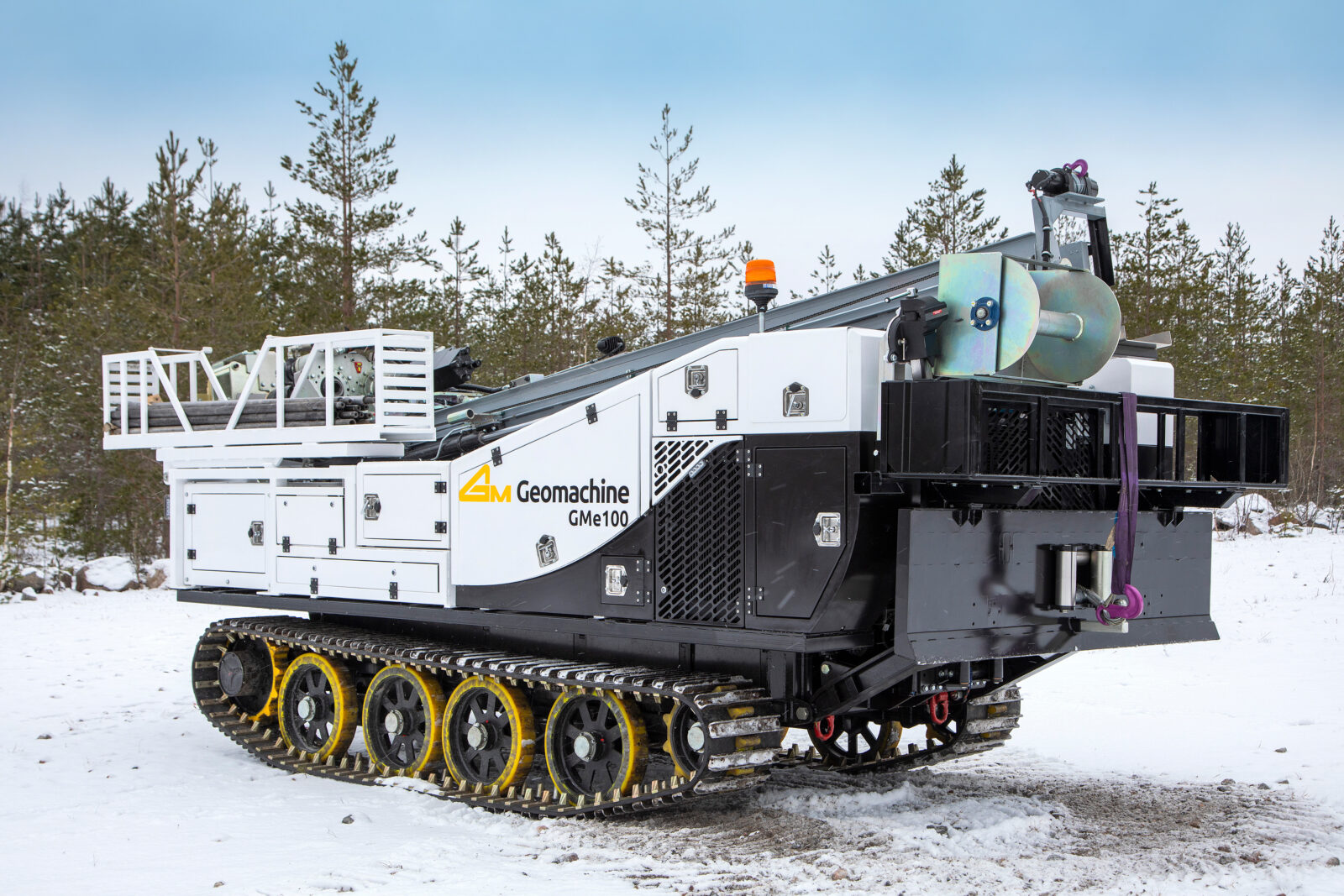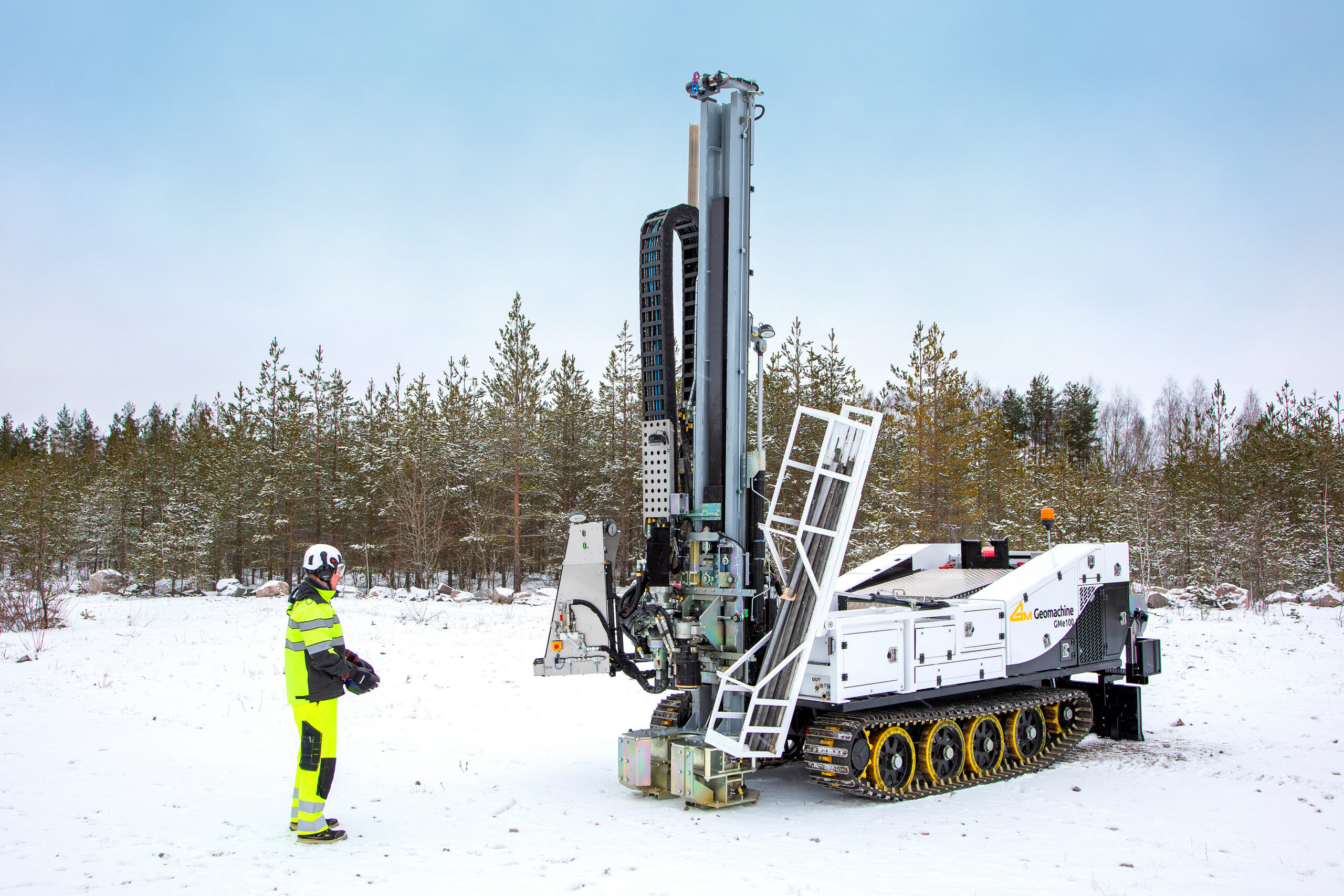Electric ground investigation rig – threat or opportunity?
18.08.2025
Geomachine Oy
The electrification of work machines is well underway in the construction, mining, and logistics sectors. As we’re still in an early transitional phase, adopting new technological solutions may raise numerous concerns. In this article, we address the most common of these.
Electrifying work machines is no longer limited to individual pilot projects. We’ve now entered a phase where, in addition to customer requirements, product development is driven by increasingly stringent legislation and societal pressure to shift toward zero-emission operations.
The Geomachine GMe100 is a fully electric ground investigation rig, launched onto the market in early 2025. Its development continues as customer feedback and changes in the operating environment are incorporated. Since electrification in the ground investigation sector is still a relatively new topic, purchasing an electric rig can raise doubts—for instance, regarding its reliability, usability, and maintenance.
Is the battery durable, and where can it be charged?
Battery technology has advanced rapidly in recent years. The proliferation of electric cars has been a strong driving force behind this, and new battery technologies are now increasingly being used in mobile work machines.
Lithium-ion batteries are the most common type. Battery packs are continuously becoming smaller and lighter, yet they can still deliver several hours of operating time in the mid‑size work‑machine category. Mechanical durability and discharge power of batteries have also improved. This is critical, especially for work machines, which may operate intermittently and include power‑demanding peaks.
Charging infrastructure is evolving rapidly. In the Nordics, infrastructure is the most advanced relative to population size—particularly in Norway, whose charging network ranks among the leading in the entire EU. This trend is expected to continue, spurred by ongoing EU programmes. The aim is to have charging stations every 60 km along key routes.
Does it operate in cold conditions?
Battery endurance is crucial for the functionality of a ground investigation rig in cold conditions. Thermal management and cold‑tolerance features of batteries are continuously improving. This advancement has made it possible for electric work machines to operate reliably even in subzero temperatures.
Diesel‑powered ground investigation machines use urea to control harmful emissions. However, urea introduces challenges in cold conditions—freezing at –11 °C can lead to nozzle blockages, pump and hose damage, and even failure to start. These problems are absent in electric rigs because urea is unnecessary. In cold conditions, this may actually make electric rigs more reliable than their diesel counterparts.

Is maintenance of the rig difficult?
Availability of spare parts for the electric rig may be a concern. The rig is equivalent to a diesel rig except for its power source, so most spare parts needs are similar.
Geomachine maintains substantial spare‑parts inventory alongside its production facilities; some parts are even machined in‑house. Therefore, spare parts for the electric rig can be delivered the same day if needed. For rarer parts ordered from external suppliers, delivery times are naturally longer.
Electric rigs require less maintenance than diesel‑powered ones because the electric motor has fewer failure points. There’s no need for engine oil changes or air and fuel filter replacements, and the components of the electrified powertrain are nearly maintenance‑free.
Maintenance of the electric powertrain mainly involves inspecting the high‑voltage battery, cables, and connectors. Cooling fluid must still be replaced every two years, just like in diesel rigs. The rest of the rig is maintained in the usual manner.
Is the electric machine difficult to operate?
Don’t fear using the electric rig because it’s more complicated than the diesel model—because it isn’t. All Geomachine rigs share the same operational logic and basic functionalities, regardless of powertrain. The only new skill needed is how to charge the battery and plan charging.
You could even argue that using an electric rig is simpler than a diesel one. Starting it is easier—no pre‑heating or warm‑up needed. You get full power from the electric motor immediately, there’s no gear shift to manage, and you don’t need to monitor urea levels.
The electric rig is also fully compatible with equipment used on diesel rigs.
Purchase price or future potential?
Money still strongly influences purchasing decisions by ground investigation firms—understandable, of course.
However, transitioning to electric ground investigation—perhaps gradually—is worth considering now. According to research, the market for electric mobile work machines could grow by 10–15 % annually until 2030 (sources: IDTechEx, BloombergNEF). Meanwhile, legislation pushing toward zero emissions will tighten, making electrification a baseline requirement.
Ground investigation firms that look beyond the purchase price and understand the industry’s trajectory and future themes now position themselves as responsible pioneers.
Interested? Contact Geomachine!

